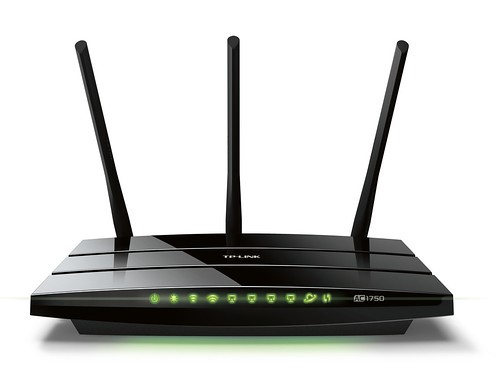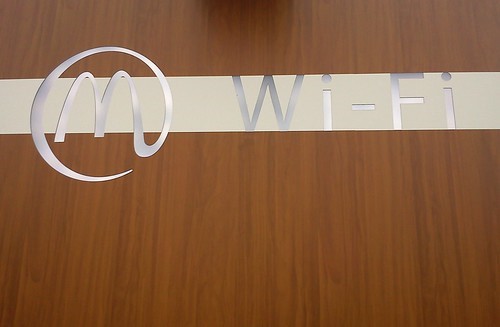First seeing a major rollout in 2024, Wi-Fi 7 is a technology touted as the next step up in home networking potential. This new standard builds on the same trajectory as its predecessors, embracing higher speeds to the tune of a maximum theoretical 46 Gbits. Capable of connecting more simultaneous devices and offering lower latency (signal delay), Wi-Fi 7 will become the next household normal.
With Wi-Fi 7 devices now approaching the £100 barrier, users might be considering making the upgrade. This move might be premature, however, given the still relevant power of older networking platforms.
The Capabilities of an Older Standard
For an illustration of why Wi-Fi 7 might be unnecessary, let’s compare it to the 600 Mbit/s speeds of Wi-Fi 4, first launched in 2009. Before this, we need to explore exactly what this speed means for the end-user.
Mbit is generally the speed that is advertised when looking at data transmission, especially with older connections. For reference, the modern standard of ultra-high-speed internet is 1,000 megabits per second, also called one gigabit. This is helpful as a comparison, but when it comes to actual file sizes we tend to use bytes instead of bits.
From this perspective, 1 gigabit connections translate to 125 megabytes per second. A speed of 125 megabytes per second can download a full old CD worth of data (700 megabytes) in five seconds. On an older 56k dial-up modem, this takes just over 29 hours.
On a 600 Mbps connection, this CD would take around nine seconds to transfer. Note that the connection speeds of a router will not affect the maximum speed of a home internet plan, it just determines the maximum data rate that can pass through a home network at any time.
Understanding the limits of these speeds is important because many of us have an "if it ain't broke don't fix it" approach to home networks. Thanks to this, the number of users still operating with routers of these older eras like Wi-Fi 4 systems is still high. So, if we apply what we know from above to real-world situations, what can we expect?
Using a direct example, consider a common use like loading a selection of roulette games on an online casino. Whether playing a less-demanding RNG game like 20p Roulette, or a more demanding live title like Lightning Roulette, even Wi-Fi 4 offers far more than the player needs. The only real issue with these older Wi-Fi 4 routers comes from the limited number of connected devices, which could be problematic if many roulette players connect on a laptop, tablet, or smartphone.

"TP-LINK Archer C7 AC1750 Dual Band Wi-Fi" (CC BY 2.0) by Firecracker PR
On the more demanding side of the spectrum, we could compare the most common high-data-use that most home networks will experience, ultra-HD video streaming. Converting the 600 Mbit/s speed to a more usable Mbps format provides a speed limit of 75 Mbps. The demands on UHD video streams from the likes of YouTube and Netflix will reach a high end of 20-40 Mbps, still below the capabilities of a 15-year-old Wi-Fi 4 router.
There is another possibility to keep in mind, which is data transmission via a router that is not performed over the internet. This is most common with transfers between wireless laptops and file servers. In this instance, the 75 Mbps isn't so slow that it would create frustrating issues unless the user found themselves with a spotty connection far away from the router.
Possibilities With a Newer System
Wi-Fi 7 does offer some profound steps up in speed and the number of possible connections over older standards, though it might be difficult to experience these advantages if you’re jumping into a lower price point. No matter the generation, newer and entry-level systems tend to lack real-world performance. This means the advantages afforded by Wi-Fi 7 might be lost due to low-quality software or hardware components.
Users could face another confounding problem here in that to get the most out of Wi-Fi 7, you’ll need a device capable of connecting to the 6GHz bandwidth range. Most existing digital devices don’t yet possess this capacity, and many of the cheaper routers don’t explore this potential fully either. Additionally, if you are looking to buy the cheapest router possible, then odds are your household isn’t stocked with the latest and most expensive high-tech gear.
With all this said, more expensive Wi-Fi 7 routers could still prove a worthy investment in certain circumstances, for users who actually require the possibilities that the new tech presents. One example could be in a larger developing Airbnb, where you're expecting many different users and devices to share off one connection point. In this instance, Wi-Fi 7 would get you ahead of the curve, to avoid the all too common problem of poor Airbnb internet connectivity to earn you higher reviews.
In general, businesses that rely on home data servers and which expect many connected devices will all see benefits from the right Wi-Fi 7 setup. Like adopting gigabit internet into our homes, Wi-Fi 7 might illustrate a point of technological overkill, but this is better than being caught behind. If you're old enough to remember what the internet was like on 56k, and the unreliability of first-generation Wi-Fi, then you'll know this is something we never want to experience again.

"Mc Wi-Fi" (CC BY 2.0) by Per Olof Forsberg
Like its forebearers, Wi-Fi 7 will eventually become adopted as standard and integrated into most network-capable devices. Whether you need to run out and upgrade today, however, that much is in doubt. Even if you are looking to take advantage of the newest tech for later plans, it could be best to wait and purchase a more mid-tier system once prices begin to drop. That way you’ll get more for your money, and you’ll be in a better future proofing place in the years to come. Still, it is worth investigating if you think it could benefit your home and business - just be sure to read user reviews on the routers first.
This article does not necessarily reflect the opinions of the editors or management of EconoTimes.



 Harris Associates Open to Revised Paramount Skydance Bid for Warner Bros Discovery
Harris Associates Open to Revised Paramount Skydance Bid for Warner Bros Discovery  Volaris and Viva Agree to Merge, Creating Mexico’s Largest Low-Cost Airline Group
Volaris and Viva Agree to Merge, Creating Mexico’s Largest Low-Cost Airline Group  Oracle Stock Slides After Blue Owl Exit Report, Company Says Michigan Data Center Talks Remain on Track
Oracle Stock Slides After Blue Owl Exit Report, Company Says Michigan Data Center Talks Remain on Track  Treasury Wine Estates Shares Plunge on Earnings Warning Amid U.S. and China Weakness
Treasury Wine Estates Shares Plunge on Earnings Warning Amid U.S. and China Weakness  Apple Opens iPhone to Alternative App Stores in Japan Under New Competition Law
Apple Opens iPhone to Alternative App Stores in Japan Under New Competition Law  Robinhood Expands Sports Event Contracts With Player Performance Wagers
Robinhood Expands Sports Event Contracts With Player Performance Wagers  Delta Air Lines President Glen Hauenstein to Retire, Leaving Legacy of Premium Strategy
Delta Air Lines President Glen Hauenstein to Retire, Leaving Legacy of Premium Strategy  Blackstone Leads $400 Million Funding Round in Cyera at $9 Billion Valuation
Blackstone Leads $400 Million Funding Round in Cyera at $9 Billion Valuation  MetaX IPO Soars as China’s AI Chip Stocks Ignite Investor Frenzy
MetaX IPO Soars as China’s AI Chip Stocks Ignite Investor Frenzy  TikTok U.S. Deal Advances as ByteDance Signs Binding Joint Venture Agreement
TikTok U.S. Deal Advances as ByteDance Signs Binding Joint Venture Agreement  Elliott Management Takes $1 Billion Stake in Lululemon, Pushes for Leadership Change
Elliott Management Takes $1 Billion Stake in Lululemon, Pushes for Leadership Change  Amazon in Talks to Invest $10 Billion in OpenAI as AI Firm Eyes $1 Trillion IPO Valuation
Amazon in Talks to Invest $10 Billion in OpenAI as AI Firm Eyes $1 Trillion IPO Valuation  Instacart Stock Drops After FTC Probes AI-Based Price Discrimination Claims
Instacart Stock Drops After FTC Probes AI-Based Price Discrimination Claims  Republicans Raise National Security Concerns Over Intel’s Testing of China-Linked Chipmaking Tools
Republicans Raise National Security Concerns Over Intel’s Testing of China-Linked Chipmaking Tools  Maersk Vessel Successfully Transits Red Sea After Nearly Two Years Amid Ongoing Security Concerns
Maersk Vessel Successfully Transits Red Sea After Nearly Two Years Amid Ongoing Security Concerns  Micron Technology Forecasts Surge in Revenue and Earnings on AI-Driven Memory Demand
Micron Technology Forecasts Surge in Revenue and Earnings on AI-Driven Memory Demand  Apple Explores India for iPhone Chip Assembly as Manufacturing Push Accelerates
Apple Explores India for iPhone Chip Assembly as Manufacturing Push Accelerates 


























